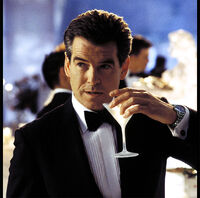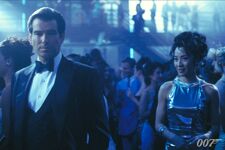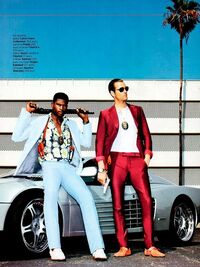Not to be confused with the Playboy brand, often associated with other wealthy aesthetics.
The Playboy aesthetic revolves around the aesthetics of the jet-setting playboy lifestyle. It could be viewed as a Brocore colored variant on the Boujee aesthetic with it's own unique tone and spin on things. Living life to the fullest in the most flashy ways possible, fast cars, tailored suits, traveling the world, the list goes on. At it's core the Playboy aesthetic is very hedonistic, though this too may vary.
Visual[]

Visually, the Playboy aesthetic features luxury goods such as yachts, sports cars, mansions, private jets, beautiful women, and - in very rare instances where the Playboy aesthetic can get a little dark - copious amounts of drugs (see Drugcore), shared between himself, his friends, and his company for the evening.[1] For a Playboy aesthetic with a slight retro flair, you might see the common Playboy tropes paired with Synthwave aesthetics and motifs (Miami Vice's Sonny Crockett being a prime example of this aesthetic in action).
As far as locales go that can be associated with the Playboy aesthetic, while these can differ from one another, the Tropical aesthetic is a particularly popular setting for Playboy visuals, though that won't stop it from delving onto Swiss ski slopes for a more Wintery flavor of Playboy with a roaring fire in a private cabin with a beautiful woman by your side. There is also a celebration of the night life, where a Playboy could be seen at a high-end club partying and having a good time with friends in the VIP Lounge (see Club).
Inspirations[]
Real-Life Figures[]
- Hugh Hefner (Creator of the Playboy magazine and brand)
- Elon Musk (Creator of the Tesla brand)
- George Clooney
- Robert Evans (Film producer)
Characters[]
- Tony Stark (Iron Man Marvel movie series)
- Bruce Wayne (Batman DC Films series)
- James Bond (James Bond film series)
- Jeff Colby (Dynasty)
- James "Sonny" Crockett (Miami Vice)
Films[]
- Kingsman: The Secret Service (2014)
- The James Bond series (1962-2021)
- Our Man Flint (1966)
- Vanilla Sky (2001)
TV Shows[]
- Mad Men (2007-2015)
- Miami Vice (1984-1989)
- Heer & Meester (2014-2019)
- Dynasty (2017-2022)
Fashion[]
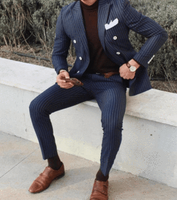
Fashion-wise, a lot of the Playboy aesthetic can be considered a masculine-coded variation of what would be popular in the Boujee or Corporate aesthetics, with nice suits, smoking jackets, and designer-brand clothing to show off their truly opulent and glorious lifestyles. However, while suits in the Corporate setting are meant to show an air of professionalism, suits in the Playboy setting serve as more of a status symbol than anything, to show the world their perceived value as a top performer in their given industry and as something for young boys to aspire for when they grow up.
Common elements of Playboy fashion include:
- Suits (usually in darker colors)
- Loafers, Oxfords, and/or Monk-Straps
- Button-up shirts
- Wristwatches
- Neck accessories (necklaces, ties, bowties, chains, etc.)
- Jewelry (rings, necklaces, dud/ring earrings, etc.)
Subgenres[]
Playboy refers to men. The closest female equivalents are socialites, or the Boujee aesthetic, but can be Femme Fatale if pushed to extremes.
The Homme Fatale[]

Pew pew!
The Homme Fatale is the male variant of the Femme Fatale, it takes the old spy movie aesthetic to the extreme: guns, cocktails, women, hitmen, and criminality (similar to Spy Fiction and Cartelcore). This variation of the Playboy aesthetic includes more of an element of danger to it, as the Playboy lifestyle could be a means to an end (as seen in prime examples of the Homme Fatale aesthetic in action: the James Bond movies and Kingsmen) or as the ultimate perilous and eternal balance between business and pleasure.
Femme Fatale often includes the theme of manipulating people for a woman to get her way - Homme Fatale more often has the male character be a "player" or popular with women. However, the Homme Fatale sub-aesthetic emphasizes action and danger with the same visuals as the Playboy aesthetic.
Wall Street[]

#$@&%
The Wall Street subgenre take the hedonistic lifestyle and ramps it up to max, while also keeping a strong hustle-culture. As a subgenre it takes a much greedier and amoral approach to life and is heavily inspired by movies like 2013's The Wolf of Wall Street (starring Leonardo DiCaprio) and 1987's Wall Street (starring Michael Douglas). The motto of a Wall Street Playboy is best summed up by the character Gordon Gekko from the aforementioned Wall Street: "Greed is good."
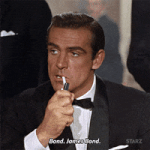
Gentleman Playboy[]
This subgenre is less active than the other subgenres. The Gentleman Playboy attends lavish Black Tie parties and sporting events. He is often surrounded by beautiful women. Boredom can lead to the Gentleman Playboy becoming a Gentleman Thief (see Heistcore) or a detective. The Gentleman Playboy aesthetic is a more respectful variant of the Playboy aesthetic and movies relating to it treating women as equals/acquaintances (while this is also in other Playboy subgenres, it is more noticeable and emphasized in the Gentleman Playboy aesthetic). Men in this aesthetic subgenre are chivalrous and often kind - as the name of "gentleman" implies.
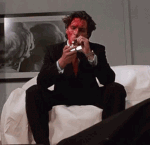
"Did you know I’m utterly insane?"
Dark Playboy[]
The Dark Playboy aesthetic leans into the more sinister and narcissistic side of the aesthetic. Violence and wealth are key motifs. The character in a story that fits this subgenre may only care about wealth/power and does not care about how they get said wealth and power. A popular example of this aesthetic in action is Christian Bale's Patrick Bateman from the 2000 film American Psycho, where they will often use the façade of the Playboy aesthetic to hide their psychopathic impulses. Characters that are in the Dark Playboy subgenre may start off as charming and fairytale-like, but reveal themselves to be dark, violent, and abusive later in the storyline.
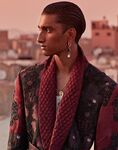
"I think he was a prince..."
The Foreigner[]
The Foreigner Playboy subgenre depicts a non-white wealthy man from a non-western country (typically India, Africa, or the Middle East). In fiction, the country may be entirely fictional (Black Panther is an example). If he’s not royalty, he might fall into the Arab Oil Sheikh trope.[2] This subgenre may be controversial due to its name, but is an important distinction in film, as non-western playboys are often portrayed very differently than western playboys.
Resources[]
External links to help get a better understanding of this aesthetic.
Pinterest Boards[]
- billionaire Playboy aesthetic by The_Young_Historian
- Tony Stark aesthetic by 🫧 ally 🫧
- Playboy aesthetic by Angie Denny
- FILM | the wolf of Wall Street by aesthetic serendipity
- James Bond aesthetics by Brianna Huntley
Playlists[]
- genius billionaire playboy philanthropist by nicole correia | Spotify
- PlayBoy Shit🦋™ by PlæyBœy Tœny | Spotify
- Playboy by Anthony immoos | Spotify
- Playboy Playlist by D_wyattt | YouTube
- playboy Playlist by RJ | YouTube


